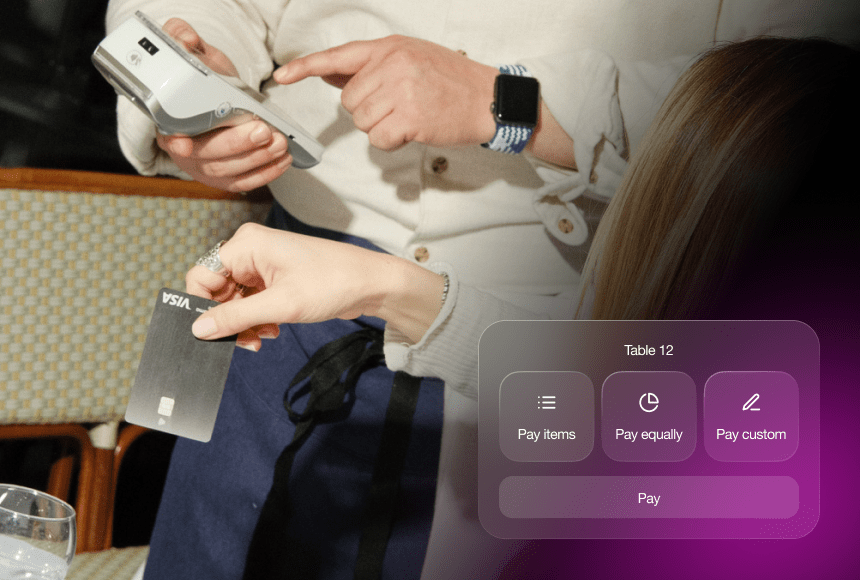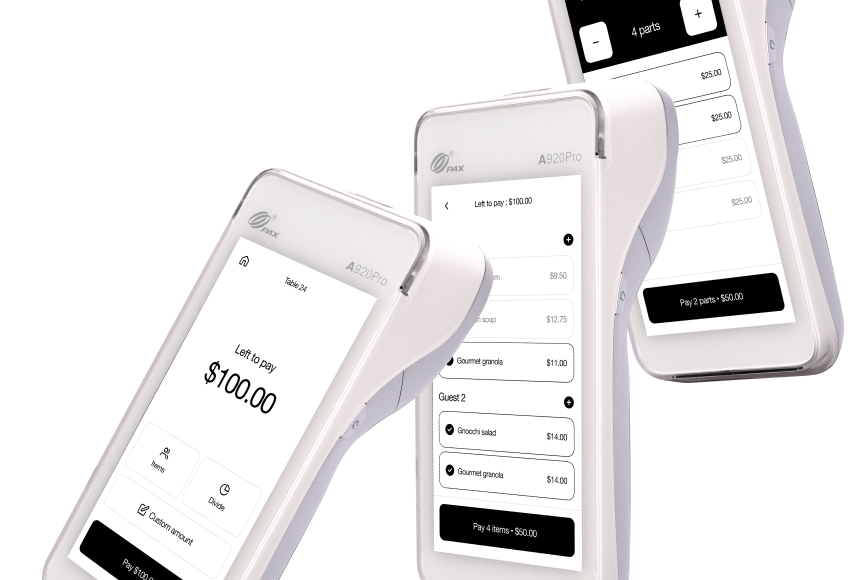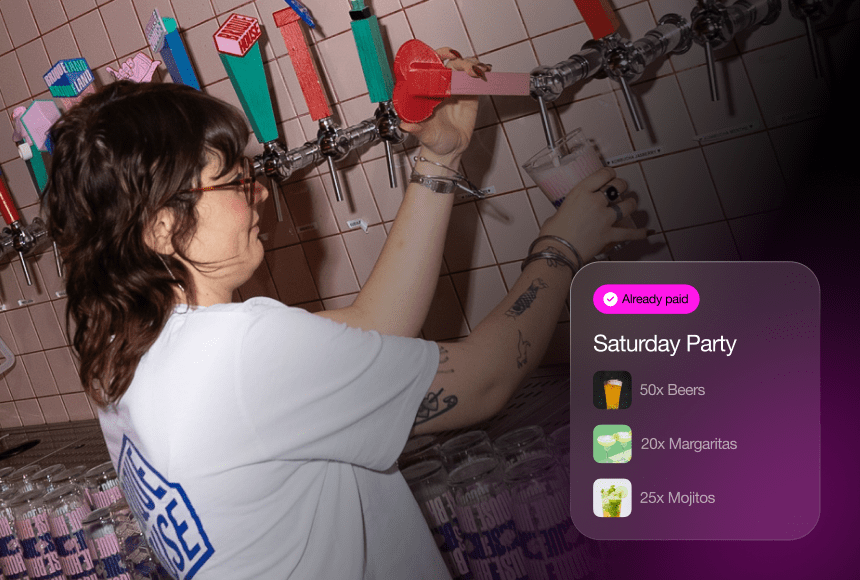
Making the Most of Your Smart Payment Device in a Restaurant Setting
Why Your Payment Terminal Matters More Than Ever
If you run a restaurant, you already know that streamlining operations can be the difference between a bustling dining room and a chaotic service. One key element in this puzzle is how you handle payments. In an era where QR codes and contactless options are becoming standard, having a modern, connected payment terminal isn’t just a “nice-to-have”—it’s central to providing a satisfying guest experience.
But simply buying a fancy new device doesn’t automatically translate into smoother checkouts or better tips. You need the right approach to harness all that a connected terminal can offer. Below are five practical tips to ensure you squeeze the most value out of your technology investment, whether you’re a cozy neighborhood café or a high-volume diner.
1. Customize the Interface for Clear, Frictionless Checkouts
Picture a diner who’s just enjoyed your best-selling pasta dish. They’re in a hurry to get home but have a good buzz from their meal. Then they see a confusing payment screen on your new terminal. Clunky flows can kill that positive vibe—and even cause them to second-guess their tip.
- Keep It Intuitive: Your payment terminal should display clear instructions—“Tap, swipe, or insert your card here,” plus easily recognizable icons for different payment types (Apple Pay, Google Pay, etc.). Even better if it supports direct scanning of a QR code, so they can finalize the bill on their phone.
- Use Familiar Language: If you cater to an English-speaking audience, avoid cryptic or overly technical terms like “Tokenize your card.” Instead, say something like, “Securely save your payment info for faster checkout.” Simple words encourage trust and lower confusion.
- Highlight Tip Options: On-screen tipping can raise average gratuities. Layout matters: a few big buttons with suggestions like 15%, 20%, or 25% typically yield better results than a blank line. According to a Toast Restaurant Technology Report (Restaurant Technology Report), digital tip prompts have boosted tip averages by a few percentage points in many cases.
The aim is to remove friction at the final step of the dining experience. You want your customers to leave with a smile, not fumbling with an unresponsive device.
2. Integrate It Seamlessly with Your POS and Back-of-House Systems
A connected payment terminal does more than just accept card swipes. Its true power lies in feeding real-time data into your other systems. Imagine your POS instantly updating after each transaction, your inventory adjusting for last-minute add-ons, and your staff avoiding double entry.
- Sync Sales Data Automatically: The terminal should be “speaking” to your primary POS, so total sales, taxes, and tips roll in automatically. Less administrative work at the end of a busy shift means your team can go home sooner—or focus on other tasks.
- Track Inventory in Real Time: Some advanced setups can even note each dish sold and notify your stock levels. Ran out of your famous chocolate cake? The system flags it to the server before another order slip comes in.
- Consolidate Reporting: Instead of juggling separate payment logs and POS records, unify them. That reduces the chance of errors or mismatches, which can be critical for your financials.
Fluent integration eliminates manual data entry, which can be both tedious and error-prone. In the end, you save staff hours and reduce accounting headaches.
3. Leverage Contactless and QR Code Features
Contactless payments soared in popularity over the last few years, and they’re not slowing down. Many diners now expect to wave their phone or tap a card to complete their bill. If your terminal can’t handle that, you risk seeming outdated.
- Highlight the Contactless Icon: Make sure your terminal visually shows where to tap a phone or card. A well-placed sticker or sign clarifies this quickly.
- QR Code Payment Solutions: With solutions like sunday, you can place a small code on the table or receipt, letting diners scan and pay in seconds from their smartphone. This frees up your servers to focus on real hospitality instead of running receipts back and forth.
- Build in Loyalty Flows: If your contactless approach integrates with your loyalty program, that’s even better. Some diners might love earning or redeeming points with a single tap. This convenience can foster repeat business.
Accepting digital wallets and encouraging phone-based checkouts helps you stand out in a sea of restaurants still stuck with slow chip readers. Faster checkouts also let you serve more guests during the lunch or dinner rush, boosting revenue.
4. Personalize Tipping and Review Requests
Your connected payment terminal doesn’t have to be a bare-bones device. It can be a platform for shaping the final impression you leave with customers.
- Customize Tip Prompts: You could highlight your staff’s reliance on gratuities, or add a playful note like, “Feeling extra satisfied? Our team thanks you.” Subtle personal touches can improve tip amounts.
- Encourage Feedback or Reviews: Once a payment completes, you might show a quick “Rate your meal from 1 to 5 stars” screen or provide a link to drop a Google review. The best time to capture real feedback is immediately—before they walk out the door.
- Offer a Next-Visit Bonus: If you want to keep diners coming back, show a coupon code or a message like, “Enjoy 10% off your next visit—just mention this code.” That small gesture can deepen loyalty and give you a reason to collect contact details.
When you harness these features, your terminal becomes more than a payment tool—it’s a mini-marketing hub. In an industry where every edge matters, small interactions like these can spur repeat visits or better word-of-mouth.
5. Train Your Staff to Champion Its Benefits
Even the fanciest connected terminal won’t shine unless your staff uses it effectively. Think of it like a well-crafted knife in the kitchen—powerful in the right hands, but unhelpful if no one knows how to handle it.
- Give Simple, Hands-On Training: A short demonstration can go a long way. Show servers exactly how to initiate payments, apply tips, split checks, or handle partial authorizations. When staff is confident, that confidence calms diners with any questions.
- Highlight Time-Saving Angles: Remind your team they’ll spend less time waiting on a single POS or chasing signatures. Freed-up moments let them upsell another drink or check in on a newly arrived table.
- Incentivize Engagement: You could track how quickly servers adapt or how effectively they prompt tips. Maybe reward top performers with a small bonus or public kudos. That fosters a culture that embraces new tech rather than dreading it.
Your staff sets the tone for whether customers see the new payment experience as a perk or a hassle. Make sure they’re on board by underlining how it helps them do their job faster and smoother.
Building Long-Term Success with a Connected Terminal
Adopting a connected payment device is more than just “getting with the times.” It’s about refining every stage of the diner’s experience—particularly that crucial last step. When a guest finishes a delicious meal, the last thing you want is for them to leave frustrated by a sluggish checkout. A well-deployed terminal ensures that the exit is as pleasant as the arrival.
Beyond the immediate convenience, the data you gather from each transaction can guide menu planning, staff scheduling, and promotional strategies. If your terminal syncs seamlessly with your POS, you’ll have a goldmine of insights on which dishes are selling best at which hours, average party sizes, and how different tip structures compare.
Of course, no solution is one-size-fits-all. Each restaurant has its own personality, clientele, and logistics. Some might lean heavily on the QR code approach to keep hardware minimal. Others might prefer an all-in-one handheld device that both servers and guests can use for flexible checkouts. The key is to find a system that fits your day-to-day workflow while empowering your staff to serve better, faster, and with less friction.
Closing Thoughts: Technology That Feels Human
A connected payment terminal should feel like an extension of your hospitality, not a barrier. When done right, it’s invisible—just a quick, intuitive moment that caps off a delightful meal. Think of it as the final flourish to your cuisine’s flavor profile: if your staff is like chefs perfecting the dish, the payment process is that last drizzle of sauce that completes the plate.
By customizing the interface, integrating with your systems, leveraging contactless methods, personalizing tips and reviews, and training your team to champion its strengths, you can extract the full value of this tech. Your diners leave on a high note, your staff finds it simpler to manage transitions, and your bottom line reflects the efficiencies gained.
So if you’ve recently introduced—or are about to introduce—a new payment setup, treat it as more than just a card reader. It can be a gateway to faster service, happier customers, and even subtle marketing opportunities, from after-dinner surveys to loyalty program enrollment. With the right approach, your connected terminal can serve as an invaluable pillar in your restaurant’s ongoing success story.
Find out more today
Drop us your details below and we’ll reach out within the next 24h
The payment terminal to make your operation simpler.
Connected to your POS, we offer the only payment terminal specifically designed for restaurants.



